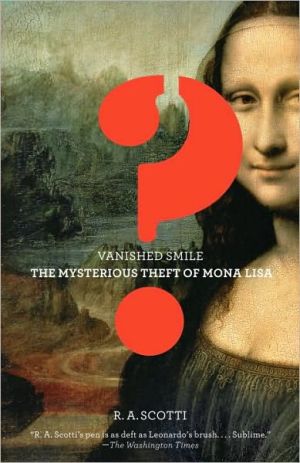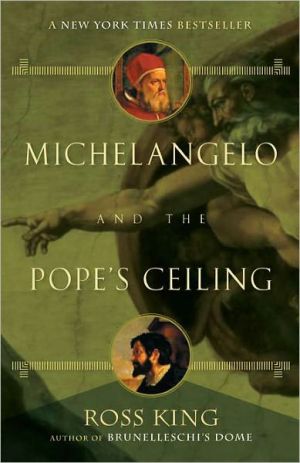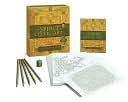Vanished Smile: The Mysterious Theft of Mona Lisa
On August 21, 1911, Leonardo da Vinci's most celebrated painting vanished from the Louvre. The prime suspects were as shocking as the crime: Pablo Picasso and Guillaume Apollinaire, young provocateurs of a new art.\ The sensational disappearing act captured the world's imagination. Crowds stood in line to view the empty space on the museum wall. Thousands more waited, as concerned as if Mona Lisa were a missing person, for news of the lost painting. Almost a century later, questions still...
Search in google:
On August 21, 1911, the unfathomable happened–Leonardo da Vinci’s Mona Lisa vanished from the Louvre. More than twenty-four hours passed before museum officials realized she was gone. The prime suspects were as shocking as the crime: Pablo Picasso and Guillaume Apollinaire, young provocateurs of a new art. As French detectives using the latest methods of criminology, including fingerprinting, tried to trace the thieves, a burgeoning international media hyped news of the heist. No story captured the imagination of the world quite like this one. Thousands flocked to the Louvre to see the empty space where the painting had hung. They mourned as if Mona Lisa were a lost loved one, left flowers and notes, and set new attendance records. For more than two years, Mona Lisa’s absence haunted the art world, provoking the question: Was she lost forever? A century later, questions still linger. Part love story, part mystery, Vanished Smile reopens the case...The New York Times - Mary Jo Murphy…beguiling…An absence of clues meant an abundance of theories, and Scotti advances them all in a collection of arresting but disparate narratives.
2\ SUNDAY IN THE LOUVRE WITH LISA.Another scorching day in Paris, ninety- five degrees Fahrenheit, no hint of a breeze, no hope of a shower. The air was close, the sun so blazing that even the carriage horses were wearing straw hats. For more than fifty days, temperatures had rarely dropped below ninety degrees. The country beyond Paris was burning. Thatch- roofed farmhouses and acres of parched forest had become tinder, and spontaneous- combustion fires broke out near Poitiers, Orléans, and Beaumont, Albertville, Dijon, and Fontainebleau.\ Within the galleries of the Louvre Museum, even in the late afternoon of August 20, the heat was a physical presence so overwhelming that it trivialized four thousand years of art and history. Maximilien Alphonse Paupardin slumped on his stool in the doorway of the Salon Carré, as sated and overstuffed as a Rembrandt burgher. He was weighed down by the weather and by an unseasonable midday meal. In everything except name, Paupardin was a simple man who felt elevated in a uniform—first in an army uniform and now in the costume of a Louvre guard. A uniform gave him stature, confidence, a defined place in the world. Out of uniform, he felt diminished.\ He was ignorant of the history that surrounded him. He knew nothing of the medieval knights in suits of mail who had staved off Anglo- Norman invaders from the parapets of Fortress Louvre or the lusty young kings, François I and Louis XIV, a Valois and a Bourbon respectively, who, imagining Paris as a new Rome, had turned the Louvre fortress into a palace fit for a Caesar. Paupardin knew only one emperor, the cocky little Corsican and epic pillager, Napoleon Bonaparte.\ On an average day, several hundred visitors would traipse through the galleries—students, artists, foreign travelers, and Frenchmen from the provinces—but visitors were few on this Sunday afternoon at the end of summer. An occasional tourist had wandered through from the Grande Galerie, not staying long enough to arouse the guard’s interest or register in his memory. He stirred on his stool, his nap arrested.\ Had a ripple of gas disturbed him, his midday meal returning? Did he catch a sudden whiff of oleander or hear an alien sound? He raised an eyelid. Three “macaroni” were whispering together. The old guard glanced at them with disdain. They were dressed in their Sunday best, black suits and straw boaters, but no suit could disguise what they were—young working- class men who had immigrated to Paris from the mountain towns of northern Italy looking for work and, more often than not, finding trouble.\ There was one other visitor. The boy had returned with flowers. A young Goethe enamored of all things Italian. The guard recognized him, a quintessential German, hair flaxen, eyes ice blue, warmed now by the lust to possess the dark lady. He mooned over her, gazing into her liquid eyes, and she seemed to answer. Eyes are the mirror of the soul, her creator, Leonardo da Vinci, believed.\ Men had been coming to court her for years, bearing flowers, notes, and poems that Paupardin scooped up and tossed out at the end of the day. She accepted their attentions democratically but gave nothing in return, just the same half- smile. She conferred it on all equally. A promise, a tease, a warning. No man could be sure. The lovesick boy would return the next day and the day after.\ Like rival lovers paying suit, the three olive- skinned men watched the German. Bemused? Mocking? Wary? Their faces gleamed as if in rapture, features shining and dissolving in a heat so oppressive that, if The Victory of Samothrace were sculpted of wax, it would dissolve like the wings of Icarus. The flowers the boy proffered were already wilting.\ Paupardin saw the visitors without seeing them, as he saw the paintings without seeing them, the masterpieces of the Louvre collection, each in its place, unchanged for decades. He was anticipating the next day, Monday, his day of rest, when the museum was closed for cleaning and the staff reduced.\ The old guard pulled a soiled handkerchief from his pocket to mop his face, and caught her watching him. She was smiling as if she knew he had overindulged at noon and dozed on the job. It was the disconcerting smile of a mother or a mistress. He wiped his face to blot her out and sighed with resignation.\ There were no youngsters among the custodians who guarded the patrimony of France. Age and lethargy were job requirements. Only retired noncommissioned officers of the French army could apply to be guards at the Musée du Louvre. The country they had served allowed them one final tour of duty before relegating them to permanent pasture and probable penury. This was their last shuffle, and ambitions rarely if ever strayed beyond a good meal, an afternoon nap, or perhaps a few moments with a grandchild.\ The guard shifted his substantial weight on the insubstantial stool and repressed a belch, regretting his choice of cassoulet, a dinner suitable for a winter Sunday, not the doldrums of August. The afternoon meandered in half- time. By four o’clock, when the bell clanged signaling the museum’s closing, the “macaroni” and the young Goethe had disappeared.\ Paupardin picked up the oleander and folded his stool. The Grande and Petite Galeries emptied, footsteps echoing, the many doors banging shut. Outside the Louvre, Paris shimmered in the glaze of heat. In the Tuileries Gardens just beyond, a halfhearted game of boule was ending.\ Summer is not a popular season in Paris. Average August temperatures chase rich and poor to the vineyards of the Loire valley and the cooling beaches of Normandy. This August was the worst that Parisians forced by one circumstance or another to remain in town could remember in a dozen years. The heat wave had hung on for weeks. Less than one millimeter of rain had fallen in Paris during the entire month, and in a single day, four people had collapsed with sunstroke. At six o’clock, it was still ninety- one degrees. The cafés of Pigalle were deserted. The Seine stood still. Along its banks, the sheltering plane trees and chestnut trees drooped.\ Night like liquid velvet settled over the mansard roofs, innocent, if a night is ever innocent. A night is young but never innocent, and as Sunday merged with Monday and the city awakened to a new day, the game that would stun Paris and astound the world was afoot.\ No one would notice for more than twenty- four hours.
Map x\ A Perfect Crime 1\ The Vanishing Act 7\ The Hunt 27\ The Blank Wall 63\ Not the Usual Suspects 77\ The Mystery Woman 119\ A Letter from Leonardo 155\ The Sting 189\ A Perfect Story 209\ The Prisoner 219\ Acknowledgments 229\ Notes 231\ Bibliography 237
\ From Barnes & NobleIt was the perfect museum heist. Not only had a stealthy thief walked away with Leonardo da Vinci's Mona Lisa, the most famous painting in the world; a full day passed before the painting was even missed. Vanished Smile takes you inside the story of the 1911 theft, an act so unfathomable that thousands of Parisians flocked to the Louvre to view the empty space where the painting had once hung. Modern-day readers will be equally struck by the names of the prime suspects fingered by the police: Pablo Picasso and Guillaume Appolinaire. R. A. Scotti's book combines the most seductive features of a mystery, a love story, and a micro-history.\ \ \ \ \ Dwight Garner…this tale has been related before. But Ms. Scotti's book shows that this recondite shaggy-dog story is well worth revisiting…It's a rolling, clattering piece of entertainment. Ms. Scotti reminds us of the bedrock appeal of the Mona Lisa's gaze: "Each person who looks at her becomes the only person in her world."\ —The New York Times\ \ \ Mary Jo Murphy…beguiling…An absence of clues meant an abundance of theories, and Scotti advances them all in a collection of arresting but disparate narratives.\ —The New York Times\ \ \ \ \ Publishers WeeklyIn this charming account of the brazen 1911 theft of the Mona Lisa from the Louvre and the two-year quest to bring her home, Scotti (Basilica) explores not only the puzzling crime but also the source of the painting's universal appeal and its provenance. On the morning of Tuesday, August 22, La Joconde was found missing from the Salon Carré. Even with help of renowned French criminologist Alphonse Bertillon, the trail was cold from the start. Rumors abounded about greedy, wealthy American collectors and the Louvre's lax security. No one in Paris was above suspicion, not even the young Pablo Picasso. While the portrait was finally recovered in Florence in 1913, its theft apparently the result of a young Italian's misguided patriotism (the painting's probable subject is a young Florentine, Lisa del Giocondo), Scotti is eager to remind readers that the mystery is far from over. The true motive for the theft-and the possible connection to a larger ring of art thieves-remains tantalizingly unknown by the end of this lively recounting. Photos. (Apr.)\ Copyright © Reed Business Information, a division of Reed Elsevier Inc. All rights reserved.\ \ \ \ \ Kirkus ReviewsRigorous study of the circumstances, theories and individuals surrounding the 1911 theft of Leonardo da Vinci's famous masterpiece. Since her creation in 1503, Mona Lisa has served as muse, riddle and obsession for scholars, scientists, musicians, writers and art patrons. At the height of Europe's Belle Epoque, she disappeared, seemingly right from under the noses of Louvre guards, plunging the worlds of both high culture and regular society into grief and outrage. For more than two years, rumors, parody and scandalous accusations peppered global headlines, as investigators struggled to piece together the crime and, most crucially, identify the culprit. Citizens of every echelon were suspect, from museum employees to denizens of the art world, including painters, collectors and dealers. Various theories of collaborations and plots swirled around for decades. Scotti (Basilica: The Splendor and the Scandal: Building St. Peter's, 2006, etc.) masterfully excavates historical truths and brazen speculations, deftly interlacing them into a gracefully crafted account that weds heady prose to shrewd investigative journalism. Her elegant yet bold reconsideration of the most famous art crime in history offers a rare meditation on the notion of motive. Analyzing a work of art that has been anthropomorphized into mythic status for five centuries, Scotti nails it: "When Mona Lisa slipped out of her frames, she seemed to change from a missing masterpiece to a missing person. She came alive in the popular imagination. The public felt her loss as emotionally as an abduction or kidnapping." More nuanced and focused than Dorothy and Thomas Hoobler's The Crimes of Paris (2009), Scotti's inquiry peels awayveils of hearsay and sensationalism to reveal a caper as enigmatic as its victim. Mystery fans, history buffs and culture vultures alike will savor this delectable immersion in the mindset of an age. First printing of 150,000. Author tour to Boston, Chicago, Los Angeles, New York, San Francisco, Toronto, Washington, D.C.\ \








